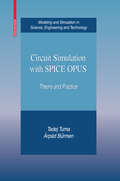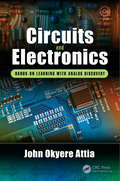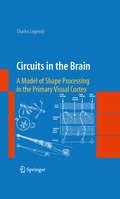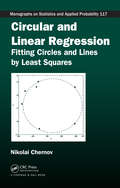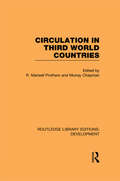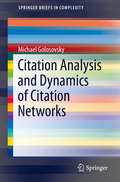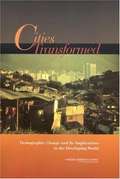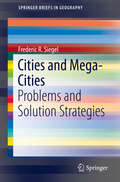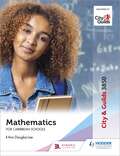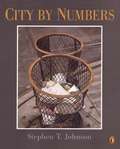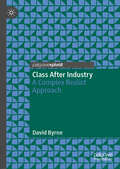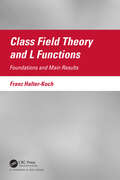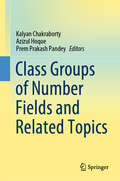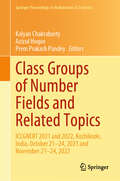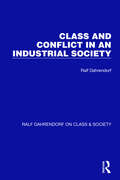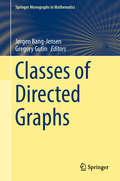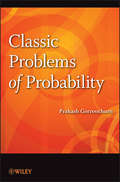- Table View
- List View
Circuit Double Cover of Graphs
by Cun-Quan ZhangThe famous Circuit Double Cover conjecture (and its numerous variants) is considered one of the major open problems in graph theory owing to its close relationship with topological graph theory, integer flow theory, graph coloring and the structure of snarks. It is easy to state: every 2-connected graph has a family of circuits covering every edge precisely twice. C. -Q. Zhang provides an up-to-date overview of the subject containing all of the techniques, methods and results developed to help solve the conjecture since the first publication of the subject in the 1940s. It is a useful survey for researchers already working on the problem and a fitting introduction for those just entering the field. The end-of-chapter exercises have been designed to challenge readers at every level and hints are provided in an appendix.
Circuit Simulation with SPICE OPUS: Theory and Practice (Modeling and Simulation in Science, Engineering and Technology)
by Tadej Tuma Árpád BuermenThis book is a unique combination of a basic guide to general analog circuit simulation and a SPICE OPUS software manual, which may be used as a textbook or self-study reference. The book is divided into three parts: mathematical theory of circuit analysis, a crash course on SPICE OPUS, and a complete SPICE OPUS reference guide. All simulations as well as the free simulator software may be directly downloaded from the SPICE OPUS homepage: www.spiceopus.si. Circuit Simulation with SPICE OPUS is intended for a wide audience of undergraduate and graduate students, researchers, and practitioners in electrical and systems engineering, circuit design, and simulation development.
Circuits and Electronics: Hands-on Learning with Analog Discovery
by John Okyere AttiaThe book provides instructions on building circuits on breadboards, connecting the Analog Discovery wires to the circuit under test, and making electrical measurements. Various measurement techniques are described and used in this book, including: impedance measurements, complex power measurements, frequency response measurements, power spectrum measurements, current versus voltage characteristic measurements of diodes, bipolar junction transistors, and Mosfets. The book includes end-of-chapter problems for additional exercises geared towards hands-on learning, experimentation, comparisons between measured results and those obtained from theoretical calculations.
Circuits in the Brain: A Model of Shape Processing in the Primary Visual Cortex
by Charles LegéndyDr. Charles Legéndy's Circuits in the Brain: A Model of Shape Processing in the Primary Visual Cortex is published at a time marked by unprecedented advances in experimental brain research which are, however, not matched by similar advances in theoretical insight. For this reason, the timing is ideal for the appearance of Dr. Legéndy's book, which undertakes to derive certain global features of the brain directly from the neurons. Circuits in the Brain, with its "relational firing" model of shape processing, includes a step-by-step development of a set of multi-neuronal networks for transmitting visual relations, using a strategy believed to be equally applicable to many aspects of brain function other than vision. The book contains a number of testable predictions at the neuronal level, some believed to be accessible to the techniques which have recently become available. With its novel approach and concrete references to anatomy and physiology, the monograph promises to open up entirely new avenues of brain research, and will be particularly useful to graduate students, academics, and researchers studying neuroscience and neurobiology. In addition, since Dr. Legéndy's book succeeds in achieving a clean logical presentation without mathematics, and uses a bare minimum of technical terminology, it may also be enjoyed by non-scientists intrigued by the intellectual challenge of the elegant devices applied inside our brain. The book is uniquely self-contained; with more than 120 annotated illustrations it goes into full detail in describing all functional and theoretical concepts on which it builds.
Circular and Linear Regression: Fitting Circles and Lines by Least Squares (Chapman & Hall/CRC Monographs on Statistics and Applied Probability)
by Nikolai ChernovFind the right algorithm for your image processing applicationExploring the recent achievements that have occurred since the mid-1990s, Circular and Linear Regression: Fitting Circles and Lines by Least Squares explains how to use modern algorithms to fit geometric contours (circles and circular arcs) to observed data in image processing and comput
Circulation in Third World Countries (Routledge Library Editions: Development)
by R. Mansell Prothero Murray ChapmanCirculation is common in Third World countries and involves reciprocal flows of people, goods and ideas. The essays in this volume, first published in1985, discuss concepts associated with circulation in its various forms, and they present empirical evidence based on field work from holistic, ecological, social, and economic points of view. Contributions from Latin America, the Caribbean, Africa, Asia and the Pacific come from an international group of authors representing a variety of disciplines in the social sciences. All who are concerned with social and economic development need to recognise the importance of circulation at all levels of society and polity.
Circumference: Eratosthenes and the Ancient Quest to Measure the Globe
by Nicholas NicastroHow do you measure the size of the planet you're standing on? "Circumference" is the story of what happened when one man asked himself that very question. Nicholas Nicastro brings to life one of history's greatest experiments when an ancient Greek named Eratosthenes first accurately determined the distance around the spherical earth. In this fascinating narrative history, Nicastro takes a look at a deceptively simple but stunning achievement made by one man, millennia ago, with only the simplest of materials at his disposal. How was he able to measure the land at a time when distance was more a matter of a shrug and a guess at the time spent on a donkey's back? How could he be so confident in the assumptions that underlay his calculations: that the earth was round and the sun so far away that its rays struck the ground in parallel lines? Was it luck or pure scientific genius? Nicastro brings readers on a trip into a long-vanished world that prefigured modernity in many ways, where neither Eratosthenes' reputation, nor the validity of his method, nor his leadership of the Great Library of Alexandria were enough to convince all his contemporaries about the dimensions of the earth. Eratosthenes' results were debated for centuries until he was ultimately vindicated almost 2000 years later, during the great voyages of exploration. "Circumference" is a compelling scientific detective story that transports readers back to a time when humans had no idea how big their world was--and the fate of a man who dared to measure the incomprehensible. [This text is listed as an example that meets Common Core Standards in English language arts in grades 9-10 at http://www.corestandards.org.]
Citation Analysis and Dynamics of Citation Networks (SpringerBriefs in Complexity)
by Michael GolosovskyThis book deals with the science of science by applying network science methods to citation networks and uniquely presents a physics-inspired model of citation dynamics. This stochastic model of citation dynamics is based on a well-known copying or recursive search mechanism. The measurements covered in this text yield parameters of the model and reveal that citation dynamics of scientific papers is not linear, as was previously assumed. This nonlinearity has far-reaching consequences including non-stationary citation distributions, diverging citation trajectories of similar papers, and runaways or "immortal papers" with an infinite citation lifespan. The author shows us that nonlinear stochastic models of citation dynamics can be the basis for a quantitative probabilistic prediction of citation dynamics of individual papers and of the overall journal impact factor. This book appeals to students and researchers from differing subject areas working in network science and bibliometrics.
Cities Transformed: Demographic Change and Its Implications in the Developing World
by Panel on Urban Population DynamicsVirtually all of the growth in the world’s population for the foreseeable future will take place in the cities and towns of the developing world. Over the next twenty years, most developing countries will for the first time become more urban than rural. The benefits from urbanization cannot be overlooked, but the speed and sheer scale of this transformation present many challenges. A new cast of policy makers is emerging to take up the many responsibilities of urban governance—as many national governments decentralize and devolve their functions, programs in poverty, health, education, and public services are increasingly being deposited in the hands of untested municipal and regional governments. Demographers have been surprisingly slow to devote attention to the implications of the urban transformation. Drawing from a wide variety of data sources, many of them previously inaccessible, Cities Transformed explores the implications of various urban contexts for marriage, fertility, health, schooling, and children’s lives. It should be of interest to all involved in city-level research, policy, planning, and investment decisions.
Cities and Complexity: Understanding Cities with Cellular Automata, Agent-Based Models, and Fractals
by Michael BattyThis is a crucial text for anyone interested in the interrelationships of media and design processes. As urban planning moves from a centralized, top-down approach to a decentralized, bottom-up perspective, our conception of urban systems is changing. In Cities and Complexity, Michael Batty offers a comprehensive view of urban dynamics in the context of complexity theory, presenting models that demonstrate how complexity theory can embrace a myriad of processes and elements that combine into organic wholes. He argues that bottom-up processes--in which the outcomes are always uncertain--can combine with new forms of geometry associated with fractal patterns and chaotic dynamics to provide theories that are applicable to highly complex systems such as cities. Batty begins with models based on cellular automata (CA), simulating urban dynamics through the local actions of automata. He then introduces agent-based models (ABM), in which agents are mobile and move between locations. These models relate to many scales, from the scale of the street to patterns and structure at the scale of the urban region. Finally, Batty develops applications of all these models to specific urban situations, discussing concepts of criticality, threshold, surprise, novelty, and phase transition in the context of spatial developments. Every theory and model presented in the book is developed through examples that range from the simplified and hypothetical to the actual. Deploying extensive visual, mathematical, and textual material, Cities and Complexity will be read both by urban researchers and by complexity theorists with an interest in new kinds of computational models.
Cities and Mega-Cities: Problems and Solution Strategies (SpringerBriefs in Geography)
by Frederic R. SiegelThis book discusses existing and future global problems of physical, chemical, biological and societal origins faced by increasingly populated cities and mega-cities, and options to mitigate or eliminate them. In nine chapters, the book focuses on rehabilitation and redevelopment projects aimed at converting shantytowns/slums into well serviced neighborhoods via secure housing, clean piped water, adequate access to sanitation, and other amenities for good living conditions. Examples of rehabilitation (restore capacity, structures, efficiency) and redevelopment (redesign, rebuild, attract investment) are addressed in detail, as are the sources of major financing to support such projects and proposals. The final chapters also discuss problems faced by countries with contracting populations, and their viable solutions. The book will be of interest to academics, city planners, land-use planners, NGOs, and designers /architects specializing in urban development and redevelopment.
Citizenship, Nationalism and Refugeehood of Rohingyas in Southern Asia
by Nasreen Chowdhory Biswajit MohantyThis book provides an in-depth investigation of citizenship and nationalism in connection with the Rohingya community. It analyses the processes of production of statelessness in South Asia in general, and with regard to the Rohingyas in particular. Following the persecution of the Rohingya community in Myanmar (Burma) by the military and the Buddhist militia, a host of texts, mostly descriptive, have examined the historical, political and cultural roots of the genocidal massacre and the flight of its victims to South Asia and South-East Asian countries. The UNHCR reports describe the plight of Rohingyas during and after their journey, while other works focus on the political-economic roots of this ethnic conflict and its consequences for the Rohingyas. To date, very few theoretical insights have been provided on the Rohingya issue. This book seeks to fill that gap, and explores a dialogue between the state and its citizens and non-citizens that results in the production of statelessness. In theoretical terms, the book addresses the construction of citizens and non-citizens on the part of the state, and the process of symbolic othering, achieved through various state practices couched in terms of nationalism. Extensive case studies from India, Myanmar and Bangladesh provide the foundation for a robust theoretical argument. Given its scope, the book will be of interest to students, academics and researchers with a focus on political economy in South Asia in general and/or refugee studies in particular.
City & Guilds 3850: Mathematics for Caribbean Schools
by Ann Douglas-LeeImprove mathematical skills and understanding with the only resource written specifically for the Caribbean region and published in association with City & Guilds.This resource is ideal for students, trainees and adults who desire to improve their mathematical skills whether in preparation for further education or for employment opportunities.- Thoroughly and systematically explore topics across each level with clear explanations, worked examples, tasks and test your knowledge multiple choice activities.- Focus your learning on the key concepts and strategies with learner tips and helpful reminders throughout. - Provides comprehensive coverage of all three certification levels, with content written by experienced examiners. - Get exam ready with clear objectives which indicate the skills to be developed and the area of the examination targeted. - Gain understanding of complex mathematical concepts with everyday transactional uses of mathematics.
City & Guilds 3850: Mathematics for Caribbean Schools
by Ann Douglas-LeeImprove mathematical skills and understanding with the only resource written specifically for the Caribbean region and published in association with City & Guilds.This resource is ideal for students, trainees and adults who desire to improve their mathematical skills whether in preparation for further education or for employment opportunities.- Thoroughly and systematically explore topics across each level with clear explanations, worked examples, tasks and test your knowledge multiple choice activities.- Focus your learning on the key concepts and strategies with learner tips and helpful reminders throughout. - Provides comprehensive coverage of all three certification levels, with content written by experienced examiners. - Get exam ready with clear objectives which indicate the skills to be developed and the area of the examination targeted. - Gain understanding of complex mathematical concepts with everyday transactional uses of mathematics.
City by Numbers
by Stephen T. JohnsonIn the ideal follow-up to his stunning Caldecott Honor book <i>Alphabet City</i>, Stephen T. Johnson turns his talents towards numbers. Wordless spreads featuring impressively photo-realistic paintings of New York City invite readers both young and old to search for the numbers zero through twenty-one hidden in the images. From a sweeping 4 found in the span of an urban bridge to the 13 of a faded crosswalk, this is an intriguing new way to think about numbers and the world around you.
City of Quarters: Urban Villages in the Contemporary City
by Mark JayneIn cities throughout the world, there is an increasingly ubiquitous presence of distinct social and spatial areas - urban villages, cultural and ethnic quarters. These spaces are sites where capital and culture intertwine in new ways. City of Quarters brings together some of the most prominent authors writing about urban villages to provide the first systematic and multi-disciplinary overview of this high-profile urban phenomenon. They address key questions such as 'What is the role of urban villages and quarters in the contemporary city?' and 'What are the economic, political, socio-spatial and cultural practices and processes that surround these urban spaces?' Blending conceptual chapters with theoretically directed case studies from all over the world, this book includes issues such as local and regional development strategies, production, consumption, the creative industries, popular culture, identity, lifestyle, and tourism.
Class After Industry: A Complex Realist Approach
by David ByrneThe transition to twenty-first century post-industrial capitalism from the ‘welfare’ industrial capitalism of the twentieth century, has affected the ways in which class is lived in terms of relational inequality and the factors that structure identity. Class After Industry takes a complex realist approach to the dynamics of individual lives, places, the social structure and analyses their significance in terms of class. A wide range of quantitative and qualitative studies are drawn on to explore how ‘life after industry’ shapes class, and the consequent potential for social change. The book will be of interest across the social sciences and beyond, to those concerned with how class forms might translate into political action.
Class Field Theory and L Functions: Foundations and Main Results
by Franz Halter-KochThe book contains the main results of class field theory and Artin L functions, both for number fields and function fields, together with the necessary foundations concerning topological groups, cohomology, and simple algebras. While the first three chapters presuppose only basic algebraic and topological knowledge, the rest of the books assumes knowledge of the basic theory of algebraic numbers and algebraic functions, such as those contained in my previous book, An Invitation to Algebraic Numbers and Algebraic Functions (CRC Press, 2020). The main features of the book are: A detailed study of Pontrjagin’s dualtiy theorem. A thorough presentation of the cohomology of profinite groups. A introduction to simple algebras. An extensive discussion of the various ray class groups, both in the divisor-theoretic and the idelic language. The presentation of local and global class field theory in the algebra-theoretic concept of H. Hasse. The study of holomorphy domains and their relevance for class field theory. Simple classical proofs of the functional equation for L functions both for number fields and function fields. A self-contained presentation of the theorems of representation theory needed for Artin L functions. Application of Artin L functions for arithmetical results.
Class Groups of Number Fields and Related Topics
by Kalyan Chakraborty Azizul Hoque Prem Prakash PandeyThis book gathers original research papers and survey articles presented at the “International Conference on Class Groups of Number Fields and Related Topics,” held at Harish-Chandra Research Institute, Allahabad, India, on September 4–7, 2017. It discusses the fundamental research problems that arise in the study of class groups of number fields and introduces new techniques and tools to study these problems. Topics in this book include class groups and class numbers of number fields, units, the Kummer–Vandiver conjecture, class number one problem, Diophantine equations, Thue equations, continued fractions, Euclidean number fields, heights, rational torsion points on elliptic curves, cyclotomic numbers, Jacobi sums, and Dedekind zeta values.This book is a valuable resource for undergraduate and graduate students of mathematics as well as researchers interested in class groups of number fields and their connections to other branches of mathematics. New researchers to the field will also benefit immensely from the diverse problems discussed. All the contributing authors are leading academicians, scientists, researchers, and scholars.
Class Groups of Number Fields and Related Topics: ICCGNERT 2021 and 2022, Kozhikode, India, October 21–24, 2021 and November 21–24, 2022 (Springer Proceedings in Mathematics & Statistics #470)
by Kalyan Chakraborty Azizul Hoque Prem Prakash PandeyThis book collects original research papers and survey articles presented at two conferences on the same theme: the International Conference on Class Groups of Number Fields and Related Topics, held at Kerala School of Mathematics, Kozhikode, Kerala, India, from 21–24 October 2021 and then from 21–24 November 2022. It presents the fundamental research problems that arise in the study of class groups of number fields and related areas. The book also covers some new techniques and tools to study these problems. Topics in this book include class groups of number fields, units, Ankeny–Artin–Chowla conjecture, Iwasawa theory, elliptic curves, Diophantine equations, partition functions, Diophantine tuples, congruent numbers, Carmichael ideals in a number field and their connection with class groups. This book will be a valuable resource for graduate students and researchers in mathematics interested in class groups of number fields and their connections to other branches of mathematics. It also attracts new researchers to the field and young researchers will benefit immensely from the diverse problems discussed in this book. All the contributing authors are leading academicians, scientists and profound researchers. This book is dedicated to Prof. Michel Waldschmidt, a renowned French number theorist, on his 75th birthday.
Class and Conflict in an Industrial Society (Ralf Dahrendorf on Class & Society #1)
by Ralf DahrendorfOriginally published in England in 1959, this book evolves a new theory of conflict in industrial society. By way of illustrating and testing this theory, the book provides detailed analyses of various social phenomena. The author carries out a full critique of Marx in the light of history and modern sociology and discusses the theories of class-conflict of James Burnham, Fritz Croner and Karl Renner.
Classes of Directed Graphs (Springer Monographs in Mathematics)
by Jørgen Bang-Jensen Gregory GutinThis edited volume offers a detailed account of the theory of directed graphs from the perspective of important classes of digraphs, with each chapter written by experts on the topic. Outlining fundamental discoveries and new results obtained over recent years, this book provides a comprehensive overview of the latest research in the field. It covers core new results on each of the classes discussed, including chapters on tournaments, planar digraphs, acyclic digraphs, Euler digraphs, graph products, directed width parameters, and algorithms. Detailed indices ease navigation while more than 120 open problems and conjectures ensure that readers are immersed in all aspects of the field. Classes of Directed Graphs provides a valuable reference for graduate students and researchers in computer science, mathematics and operations research. As digraphs are an important modelling tool in other areas of research, this book will also be a useful resource to researchers working in bioinformatics, chemoinformatics, sociology, physics, medicine, etc.
Classes of Modules (Chapman & Hall/CRC Pure and Applied Mathematics)
by John Dauns Yiqiang ZhouBecause traditional ring theory places restrictive hypotheses on all submodules of a module, its results apply only to small classes of already well understood examples. Often, modules with infinite Goldie dimension have finite-type dimension, making them amenable to use with type dimension, but not Goldie dimension. By working with natural classes
Classic Philosophical Arguments: The Prisoner’s Dilemma
by Martin PetersonThe Prisoner's Dilemma is one of the most fiercely debated thought experiments in philosophy and the social sciences, presenting the simple insight that when two or more agents interact, the actions that most benefit each individual may not benefit the group. The fact that when you do what is best for you, and I do what is best for me, we end up in a situation that is worse for both of us makes the Prisoner's Dilemma relevant to a broad range of everyday phenomena. This volume of new essays from leading philosophers, game theorists, and economists examines the ramifications of the Prisoner's Dilemma, the directions in which it continues to lead us, and its links to a variety of topics in philosophy, political science, social science, economics, and evolutionary biology. The volume will be a vital and accessible resource for upper-level students as well as for academic researchers.
Classic Problems of Probability
by Prakash GorroochurnWinner of the 2012 PROSE Award for Mathematics from The American Publishers Awards for Professional and Scholarly Excellence."A great book, one that I will certainly add to my personal library."--Paul J. Nahin, Professor Emeritus of Electrical Engineering, University of New HampshireClassic Problems of Probability presents a lively account of the most intriguing aspects of statistics. The book features a large collection of more than thirty classic probability problems which have been carefully selected for their interesting history, the way they have shaped the field, and their counterintuitive nature.From Cardano's 1564 Games of Chance to Jacob Bernoulli's 1713 Golden Theorem to Parrondo's 1996 Perplexing Paradox, the book clearly outlines the puzzles and problems of probability, interweaving the discussion with rich historical detail and the story of how the mathematicians involved arrived at their solutions. Each problem is given an in-depth treatment, including detailed and rigorous mathematical proofs as needed. Some of the fascinating topics discussed by the author include:Buffon's Needle problem and its ingenious treatment by Joseph Barbier, culminating into a discussion of invarianceVarious paradoxes raised by Joseph BertrandClassic problems in decision theory, including Pascal's Wager, Kraitchik's Neckties, and Newcomb's problemThe Bayesian paradigm and various philosophies of probabilityCoverage of both elementary and more complex problems, including the Chevalier de Méré problems, Fisher and the lady testing tea, the birthday problem and its various extensions, and the Borel-Kolmogorov paradoxClassic Problems of Probability is an eye-opening, one-of-a-kind reference for researchers and professionals interested in the history of probability and the varied problem-solving strategies employed throughout the ages. The book also serves as an insightful supplement for courses on mathematical probability and introductory probability and statistics at the undergraduate level.

